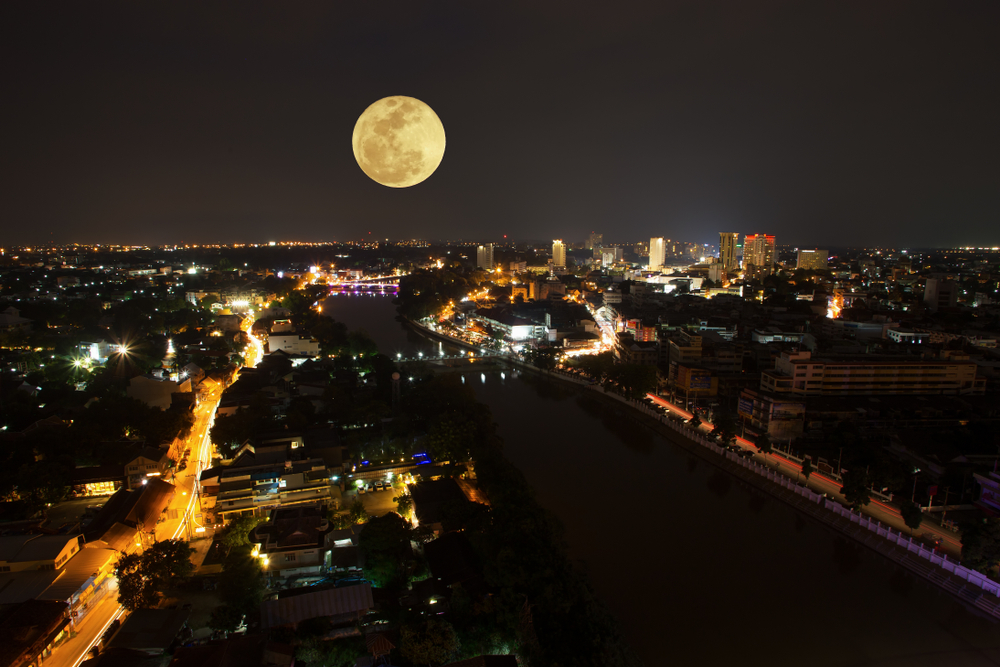
If you pay attention to the news or astrology, you may have heard about micromoons and supermoons. These are astrological terms, but they also refer to physical events. So what are they, and what’s the big deal? Astronomy and astrology can help you better understand their causes and what they mean for us on Earth.
Lunar Perigee and Apogee
You already know that it takes about 28 days for the Moon to orbit Earth – 27.322, to be exact. What you may not know is that its orbit is elliptical, which means it’s oval instead of a perfect circle. NASA mentions that the Moon’s closest point to Earth is its perigee. Meanwhile, the farthest point is its apogee. Because of the 28-day lunar cycle, the Moon reaches its perigee and apogee at least once per month.
Perigees and apogees affect our planet in a couple of ways. Our moon appears a little larger at perigee and somewhat smaller at apogee. But that’s not all – the subtle change in distance impacts our tides. EarthSky’s Deborah Byrd explains that our moon’s distance at perigee creates a stronger gravitational pull. Meanwhile, an apogee results in weaker gravitational forces.
Lunar Rotation and Moon Phases
What’s also cool is that the Moon also takes 27.3 days to rotate once on its axis. Scientists call this synchronous rotation, as Space.com reveals. Synchronous rotation is why the Moon is tidally locked – the same side is always facing Earth.
Synchronous rotation and our orbit around the Sun create lunar phases. When our moon is behind Earth and opposite the Sun, we see a full moon. During this time, the near side facing us illuminates. When our moon is directly between Earth and the Sun, we don’t see it in our skies at all. That’s because the near side is completely dark and the far side – the part we can’t see from Earth – is facing the Sun and completely lit.
A Rose by Any Other Name
If you’ve delved into astrology, you may have heard about conjunctions. What’s their function? According to AstroStyle, they occur when two planets are zero degrees apart in the same zodiac sign. Their energies can blend powerfully in positive and negative ways. Opposition means that two planets are 180 degrees and six signs apart. The AstroTwins point out that they can create a tug of war between energies, but they also offer opportunities for balance.
Astronomers also talk about conjunctions and oppositions. When the Sun and Moon are on the same side and form a straight line with Earth, they’re in conjunction. Our sun and moon can also sit opposite each other and make a straight line with Earth between them. When this happens, they’re in opposition. Astronomers call both formations a syzygy – pronounced “SIZ-uh-jee.” This refers to a straight-line formation of three or more celestial objects.
What These Moons Mean
What does all this science have to do with micromoons and supermoons? In her EarthSky piece, Byrd says that our planet, Sun, and Moon form a straight line at full and new moons. With solar gravity strengthening lunar gravitation forces, the extra pull creates higher tides. Perigee and apogee also impact how our moon looks in the sky and its gravitational pull. Combine them and you have neat little equations. A full or new moon plus a perigee equals a supermoon. Add a full or new moon to an apogee and you get a micromoon.
AstroStyle explains that people believe that micromoons and supermoons coincide with natural disasters. Because astrology links the moon with our emotions, some say they cause greater emotional effects. Science hasn’t been able to prove either true, but we do know that they affect our planetary tides. Interest in astrology is an individual choice, but we know one thing: humans will keep watching the moon for generations to come.

